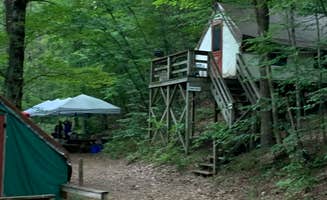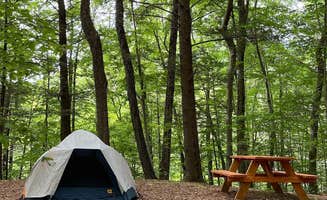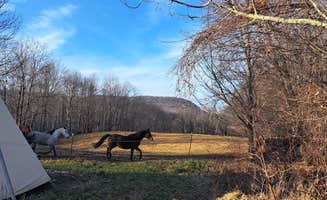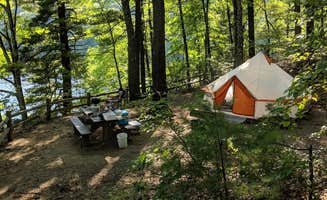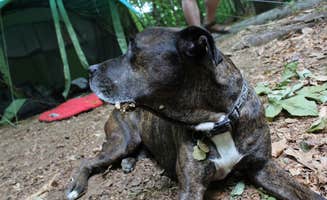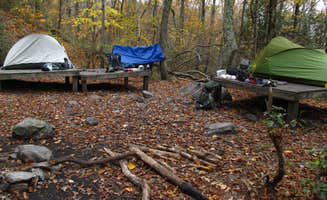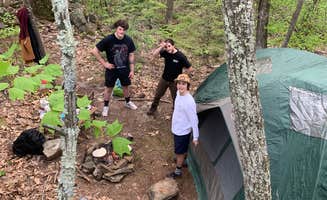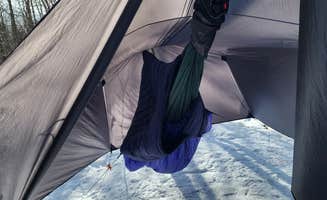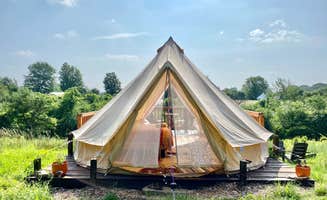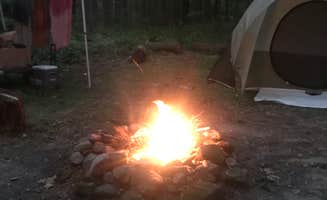Tent camping options near Peru, Massachusetts range from primitive backcountry sites to established campgrounds with basic amenities. Located in the northern Berkshires at approximately 2,000 feet elevation, this region experiences cooler temperatures than surrounding valleys, with summer highs averaging 10-15 degrees below nearby lowland areas. Winter camping is limited by heavy snowfall from December through March, with some facilities remaining closed until late April.
What to do
Enjoy riverside recreation: At Barton Cove Campground, campers can rent kayaks and canoes for water activities. "You can't swim unless you rent a canoe/kayak and swim while you're out on the water," notes Brie B., who adds that "views between the trees are nice" despite fenced campsites.
Take a scenic hike: The Connecticut River Valley offers multiple hiking trails connecting campgrounds. Tina D. describes the hike to Laurel Ridge as having "a sheer drop-off of hundreds of feet spreading out into a massive valley scene below" with a section of trail that's "the kind of spot that makes you go 'This is why I hike!'"
Experience unique accommodations: The Chester Railway Station provides a distinctive overnight option. "It's a really fun place to spend a night, especially for a train enthusiast. The caboose is stationed on a big grassy field, near a real railroad," explains Esther L., who mentions "you hear the trains running at night."
What campers like
Privacy between sites: Backcountry campgrounds offer exceptional solitude. Kay D. from Alander Trail Campground explains, "There's quite a few sites to choose from and each offer quite a bit of privacy. It's completely free and usually isn't too busy since most people don't like having to carry all their stuff in that far."
Clean facilities: Despite remote locations, many sites maintain high standards. Liz P. notes that at Alander Trail Campground, "The area was immaculate and not one piece of trash on the ground anywhere! The outhouse was even clean!" This attention to maintenance extends to basic amenities at several primitive sites.
Adventure activities: Many campgrounds serve as basements for outdoor sports. Dominick V. highlights that Zoar Outdoor offers "camping to rafting" with staff that "went out of their way to take care of our group." The campground connects to adventure companies providing water activities on nearby rivers.
What you should know
Hiking requirements: Many tent sites require significant effort to access. Nora S. warns about Laurel Ridge: "It's quite a hike to get to this dispersed campground, so be prepared! We packed on our backpacks early in the morning and arrived there mid-afternoon."
Seasonal considerations: Most primitive camping areas close during winter months. Brad N. from Sodom Mountain Campground mentions staying "for a month" during summer, indicating the seasonal nature of camping in this region.
Fire restrictions: Fire policies vary widely between sites. Kay D. describes Alander Trail offering "a fire pit and grill rack," while at Laurel Ridge, Nora S. notes, "No fires allowed, however." Always check current restrictions before your trip as seasonal changes affect regulations.
Tips for camping with families
Check accessibility: Consider hiking difficulty when planning with children. The best tent camping near Peru, Massachusetts often involves significant walking distances. Annmarie J. describes Alander Trail as "about a mile hike from the trailhead," making it challenging for families with young children.
Wildlife awareness: Prepare children for potential animal encounters. Kay D. mentions, "We had some scares with coyotes and bears in the past but never anything crazy" and notes that Alander provides "a bear box you would be sharing with other campers nearby."
Rules and restrictions: Some campgrounds have specific policies affecting family camping. Jade B. found that Seth Warner Shelter had "a lot of restrictive rules compared to other campgrounds that made camping more stressful." Check regulations before arriving with children.
Tips from RVers
Limited access: Most backcountry sites near Peru are unsuitable for RVs due to hiking requirements. Daniel S. notes that Seth Warner Shelter "is .2 miles off the LT/AT" while Kay D. mentions having to "park at the entrance and hike in about 1.5-2 miles with everything on your back" at Alander Trail.
Infrastructure limitations: Few campgrounds offer hookups or RV amenities. When facilities are available, they're often basic. Brad N. describes Sodom Mountain's improvements: "All roads are dirt and all potholes have been repaired," suggesting previous infrastructure challenges for larger vehicles.


